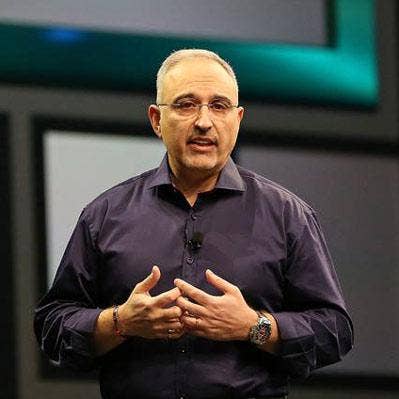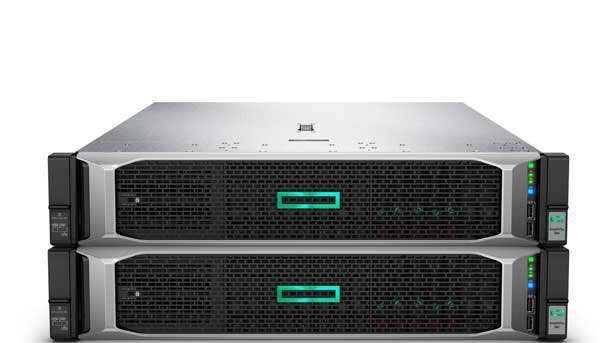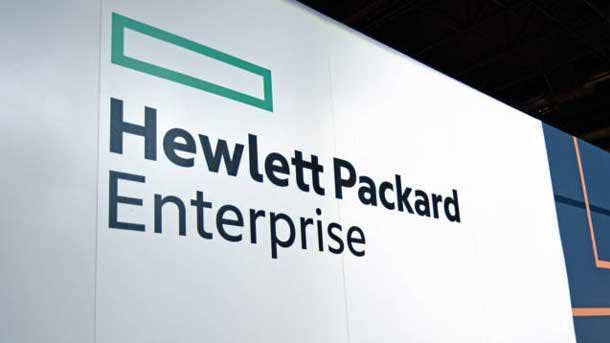HPE CEO Antonio Neri On HPE Versus Cisco’s Edge Computing Strategies

A Strong Demand Environment For Enterprise IT Spending
With a growing need for businesses to manage the astronomical increases in data that is being created, Hewlett Packard Enterprise CEO Antonio Neri told CRN that he continues to see strong enterprise IT solutions demand.
"Data continues to explode around us," Neri told CRN after HPE reported better-than-expected earnings for its first fiscal quarter and raised its earnings per share outlook for the current fiscal year. "That is why I would say I am very confident that the demand will stay strong. Ultimately, it is not just about the political environment. It is about what is happening with us and the data we are creating."
HPE posted earnings of 42 cents per share for its first fiscal quarter ended Jan. 31, 7 cents per share above the Wall Street consensus of 35 cents per share.
HPE raised its earnings projections for the full year by 5 cents per share to a range of $1.56 to $1.66 per share.
Sales for the quarter were $7.6 billion, which was down 2 percent from the year-ago period of $7.67 billion, but up 1 percent excluding the commodity Tier 1 hyper-scale server business, which HPE exited at the end of 2017.
Neri predicted accelerating sales growth for the remainder of the fiscal year. "Our strategy is on point," he said. "The enterprise of the future will be edge-centric, cloud-enabled and data-driven. We are proud to be the company who can best help our customers connect all their data wherever it lives. Near term, we expect the demand environment to remain healthy and our differentiated software-defined solutions to continue to gain traction with customers driving accelerated revenue growth starting in Q2."

Talk about the first fiscal quarter results and the decision to raise earnings per share for the fiscal year.
This was another strong quarter where we delivered solid profitable growth thanks to our strategy and solid execution. That strategy is to accelerate intelligent edge and to derive profitable growth in the hybrid IT segment. To do so, we focus on innovation and customer experiences together with our partners. That gives me the confidence that we can raise guidance on EPS [earnings per share] thanks to the accelerated growth we are going to see throughout the year and the mix shift that we are driving.
Obviously, we cannot do that without the channel partners. We saw double-digit growth in sell out, which gives us the ability to have flexibility. What I promised my channel partners is that every time I announce the quarter I will get together with them the next day and we'll give a little more insight about our execution and our portfolio.
I am super pleased with our software-defined infrastructure, Aruba, hyper-converged, and Synergy, which is now a $1 billion run rate business for us. So there are a lot of things going really, really well and I am confident based on the line of sight that I have that this is a portfolio that customers and our partners can leverage going forward.

What is the macro IT economic environment and the enterprise appetite for digital transformation?
From a macro perspective, demand remains steady. We continue to monitor it, but when we talk to customers and our partners they tell us they are making critical investments to accelerate the digital transformation.
As we have always said—and it is part of our brand—the future belongs to the fast. That is something customers understand. To deliver outcomes they need to harness the power of the data they are creating every day. That data continues to explode around us. That is why I would say I am very confident that the demand will stay strong. Ultimately, it is not just about the political environment. It is about what is happening with us and the data we are creating.
From my perspective, our strategy is sound. We are focused on execution. We are focused on the software- defined portfolio. We are focused on connectivity at the edge and security, and the next frontier, which is computing at the edge. That business is growing triple digits. For us it is about execution.
There was a question about the EPS guidance and whether we are going to continue to invest. We are continuing to invest in the business because ultimately we need the best talent and the best portfolio to compete and win with the partners.

What kind of investments are you making in regard to the intelligent edge?
Innovation is about three legs of the stool: organic, inorganic and through strategic partnerships. Our organic innovation has been very strong—HPE OneView, Synergy, Superdome Flex, and Aruba, which is now organic given that it has been in our portfolio for almost four years.
We continue to look at ways to accelerate our growth inorganically when it adds intellectual property and talent. Last quarter, we did the BlueData acquisition. That is big data, fast storage in a consumption-driven model.
We will continue to acquire if it makes sense, and adds those two components [intellectual property and talent] and if it makes sense on the return on invested capital. We will continue to accelerate.
I have now done 12 acquisitions in the last three years. So it is not a matter of if we will do it. It is about doing the right ones that will accelerate our strategy.

What is the difference between Cisco's edge strategy versus HPE's edge strategy?
I don't look at the edge strategy as a point product strategy. I look at it as solution-driven by the use cases we live every day. Our difference is we have a solution-driven approach. They have a product-driven approach.
Point No. 2, we look at all aspects of the solution. It starts with connectivity and includes security and cloud computing, which includes both the compute side and storage side with the software to run it as efficiently and as effectively as possible. That [edge compute] business grew triple digits for us. The platform to deliver that is Aruba plus our compute offerings in the form of cloud.
We just announced our [Edgeline] EL8000 [server] for telco. That is just one example, Our strategy is very different. We talk about edge being the next frontier. We are focused on three verticals: manufacturing, health care and transportation in a fully vertical solution-driven approach including services and consumption-based models. That is the differentiation with our strategy and the customers are loving it. That is where we see growth.

What is your reaction to Lenovo comparing their electrical consumption-based model to the HPE GreenLake software pay-per-use model?
There is no other offer on the market that matches HPE GreenLake.The reason is simply because we are not providing just a tweak or an iteration of the traditional financing model. We are providing a true services- led offering on-prem—a full solution, which means it is enabled by software and backed by HPE Financial Services. It is the most flexible on-prem consumption model on the market, which includes third-party options too.
From my perspective, there is no other offer like ours. Sometimes our competitors—in the spirit of trying to deliver news—mislead customers. When you put them next to each other [the HPE consumption model versus the Lenovo consumption model], it is clear there is no comparison. GreenLake already has more than 450 customers and $2 billion in TCV [total contract value]. That business continues to accelerate. We are growing it double digits. I believe we have a three-year advantage compared to any competitor in that market.
This is something the partners now understand. That is why one key aspect of the growth of GreenLake is coming through channel partners [with nearly 300 pecent channel growth in the first fiscal quarter].

What is the key to the 70 percent growth for the HPE hyper-converged business?
You need to look at SimpliVity and Synergy. We give customers both flexibility and scale—not one pointed offer. SimpliVity is really awesome and plays in very specific use cases and segments of the market like backup/recovery, VDI and small private cloud implementations at the edge in the ROBO [remote office/branch office] space as well as in the data center. But when you talk about a large private cloud with hyper-converged, Synergy is a super-set of that. That is why Synergy is growing so fast at a triple-digit rate and is now at a $1 billion run rate.
You need to look at the full portfolio—not just SimpliVity, but SimpliVity plus Synergy. That is unique. Nobody else has that. Cisco has HyperFlex but it doesn't have the scale of Synergy. If you think about Dell obviously they have VxRail, but they don't have the scale of Synergy. Nobody has a true composable infrastructure like we do. The channel partners totally understand this. The common denominator in all of this is the experience to deploy and manage, which is HPE OneView.

What kind of impact is the new San Jose headquarters—especially the interior, which you designed— having on the culture?
I am so proud of this. Obviously, myself and my team drove this change and we did it n record time—in less than a year. We are in our new headquarters now and I am looking out the window right now and the view is spectacular.
The reality is we have provided our customers with an unbelievable, state-of-the-art, purpose-built headquarters, totally digital.
In April, we are going to open the executive briefing center [EBC] on the fourth floor, which is going to have state-of-the-art use cases where you can really see what we are doing for our customers. Our customers are asking us to showcase them in that EBC.
When you talk to the employees here, it is a completely different perspective. This is part of our culture. Remember my three priorities: innovation, customers and partners, and culture. This goes to the heart of the culture.

How did you go about designing the interior of the new headquarters?
Remember, I was a professor of art. I thought about the colors of the world, the carpets, the furniture, the layout, the windows, trimmings, the boardroom, the EBC, the lobby experience, the whole experience.
Talk about your decision to do a quarterly webcast with channel partners.
The reason why we do it is because I always say they are an extension of my team. I don't treat them as a vehicle to sell my product. I consider them as a part of my organization. When you have that connection with the CEOs of partners where they can hear directly from you and you can have a dialogue, it makes a huge difference.